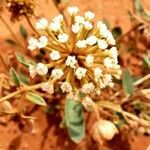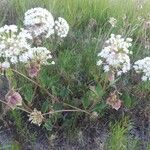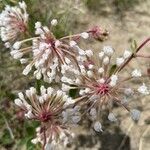Plants perennial. Stems procumbent to semierect, slightly to moderately branched, elongate, sometimes reddish at base and nodes, glandular-pubescent, viscid. Leaves: petiole 0.5-8 cm; blade ovate to triangular or lanceolate, 3-12 × 1-8 cm, margins entire to subsinuate and slightly undulate, adaxial surface glandular-pubescent, abaxial surface more densely and longer pubescent, or sometimes villous. Inflorescences: peduncle longer than subtending petiole; bracts linear-lanceolate to oval-ovate, 7-25 × 2-12 mm, scarious, glandular-puberulent to short villous; flowers 30-80. Perianth: tube greenish to reddish purple, 10-25 mm, limb white, (2-)6-10 mm diam. Fruits winged or not, fusiform and appearing deeply grooved when wingless, when wings not distorted, fruit ± cordate in profile, tapered at base, with prominent beak in broad notch at apex, 5-12 × 2.5-7 mm, indurate, rugose veined or, if wings distorted, fruit ± rhombic in profile and tapered at both ends, or obdeltate and truncate at apex, with prominent beak; wings 4-5, thick, narrow, not dilated at apex, cavities extending throughout; peripheral fruits often distorted, S-shaped in lateral view.
More
A perennial herb. It grows 0.6 m high. It has a taproot. The stems are sticky and hairy. The leaves are opposite and sticky. They are 9 cm long by 3 cm wide and narrowly oval. Flowers occur in clusters of 25-80 at the top of the plant. The flower is tube shaped with 4 or 5 sepals. They are usually white but can be pink. The fruit are egg shaped and dry. They are about 3 mm long.



